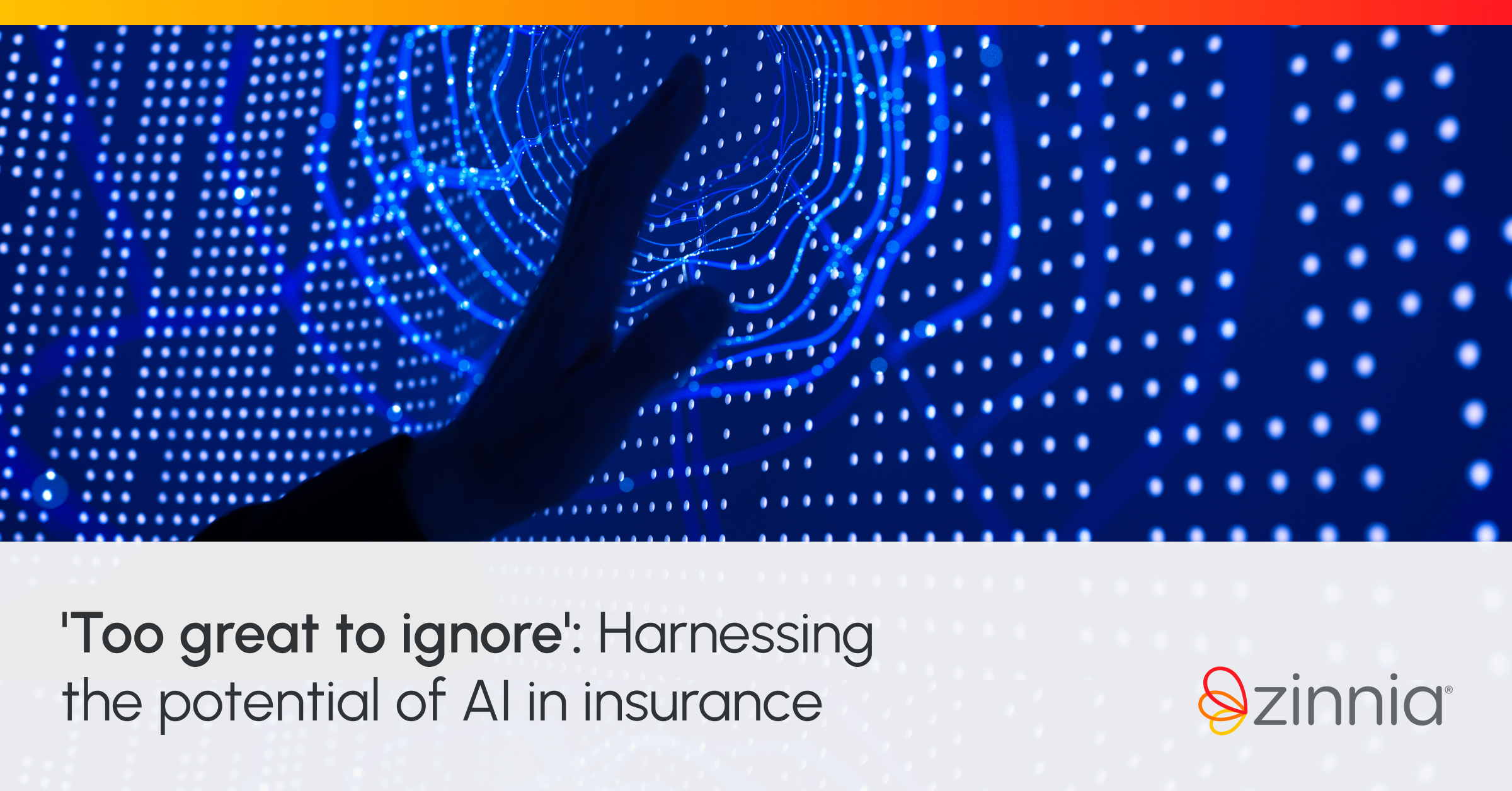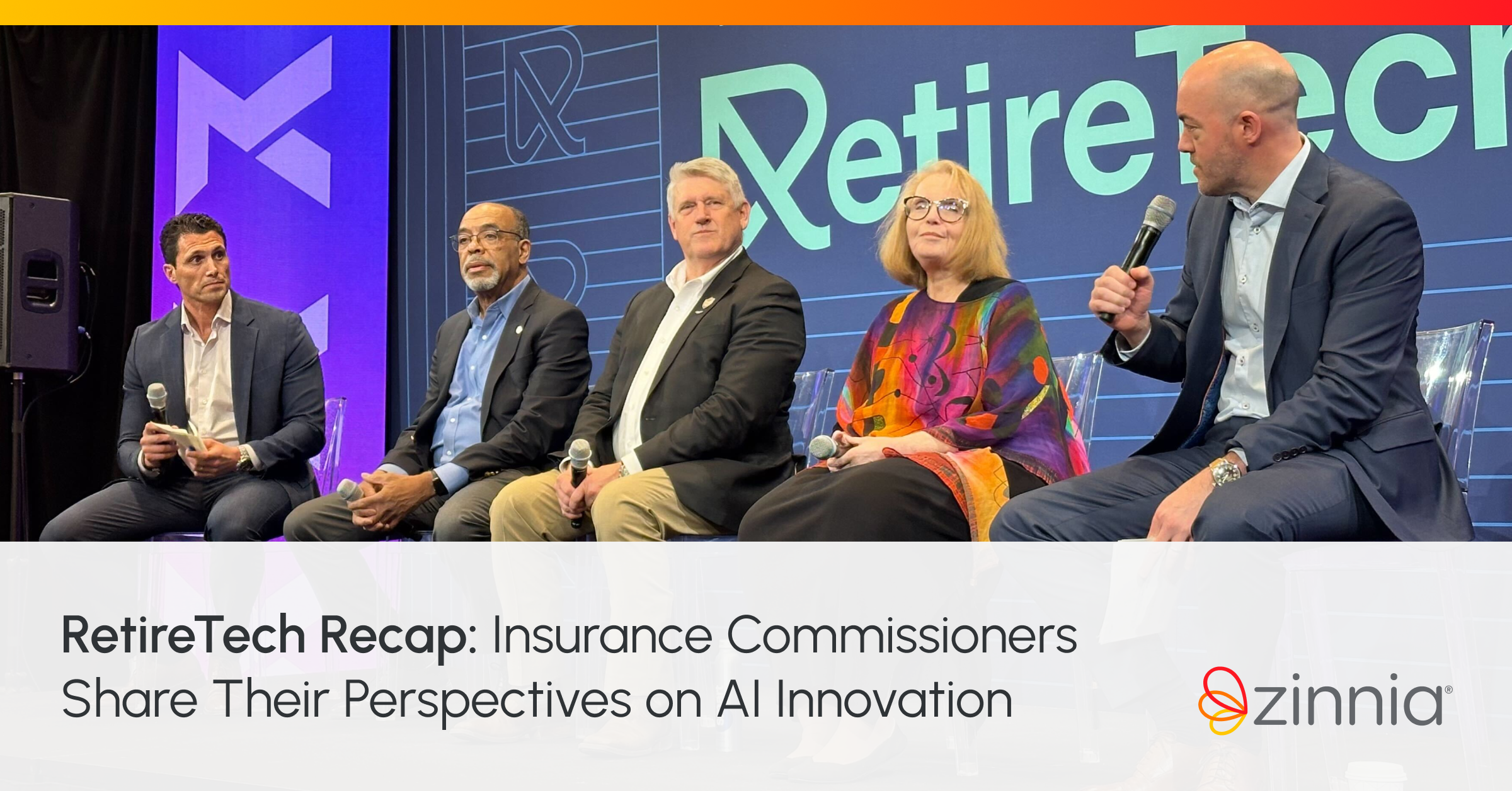Yuval Rooz, co-founder and CEO of Digital Asset, is reminded of a certain childhood staple when he thinks about the potential of Zahara, Zinnia’s cutting-edge policy management solution for life & annuity (“L&A”) carriers. “It’s a lot like Legos, where you can construct new products using these repeatable patterns,” Rooz says. And he would know — the foundation of Zahara is built on his company’s distributed ledger technology. Rooz says that by partnering together, the two companies can help “break down roadblocks” and unlock new efficiencies in the L&A industry.
The new system of record and standardized data framework is securely hosted on Daml Hub, Digital Asset’s core technology and platform for building and running multi-party applications. It ensures speed and privacy of data exchange and offers more efficiency and less complexity than legacy IT systems. Zahara will help accelerate new insurance product launches and provide state-of-the-art solutions for insurance administration and servicing.
Zinnia spoke with Rooz about how Digital Asset is helping Zinnia solve the thorniest problems in life & annuities and bringing a new set of standards to the industry.
Zinnia: What makes Digital Asset technology well-suited for the life & annuity industry, even beyond other blockchain technologies?
Yuval Rooz: One of the challenges that we have identified together with the team at Zinnia is when you have multiple parties that are supposed to be agreeing on the same source of truth, but as a result of managing all different systems, you still today have a lot of breaks. There’s also not a good system that connects the lineage of insurance policies and annuity contracts.
Today, for example, if you find an issue from multiple years ago, amending those contracts and adjusting the changes as a result of the mistake could take months, if not over a year, and cost hundreds of thousands, and in some cases, even millions of dollars. You could do that today in Zahara in a matter of minutes with almost no cost.
How can Zahara solve those breaks?
You have an underwriter, you have clients, you have brokers, you have multiple players that are involved in a life insurance product. And at the end of the day, when the client signs a contract, all of the parties agree on it.
Everybody is supposed to have the same piece of information, but sometimes, when there’s cash that needs to move or when it comes to the price of a product, there are disagreements between different parties. The opportunity is there to eradicate these breaks or disagreements through the standardization of a data model and having one source of truth.
And if there is still disagreement in certain cases, you have a much richer data model that can reconcile the differences in a more efficient manner through smart contract technology. A smart contract is the closest technical implementation of a literal contract. Rather than having many disjointed components that hopefully give you the behavior of a contract, a smart contract is the literal digital representation of a financial contract.
What were the shared goals and problems you wanted to solve when you partnered with Zinnia?
One that comes out very quickly when it comes to blockchain is operational efficiency. How do you reduce the cost to operations as a result of breaks?
Traditionally, the way data systems have been designed, you just get a view of the world as it is today. The way we are building Zahara is that all the state transitions, all the permutations of how contracts have been changed over time, are all stored on the ledger.
When you want to look back, when you want to do an analysis and be able to look at the lineage of a contract, and what changes were made to get to where you are today, you can find that in one place. Because you have that lineage, you can build functions like amending historical contracts in a fully automated manner, rather than having a bunch of consultants come in, analyze what the mistake was, and then manually change a bunch of databases to reflect the change.
One of the goals for Zinnia is bringing greater standardization and simplicity to the industry. How does Zahara help achieve that?
When you start looking at life insurance products beyond term you find a lot of repeatable patterns. Rather than thinking about every product as its own standalone vertical product that requires its own build in Zahara, we can take some of these repeatable patterns to construct new products.
The system itself knows how to process these repeatable patterns, so creating these new instruments will be much faster from a perspective of testing and verifying what you want to achieve.
Digital Asset works with a range of other companies across the financial industry. What lessons have you learned that are applicable to the life & annuities industry?
One of the patterns that we see happen over and over again is you have an innovator or someone who sees an opportunity to bring efficiency to a market. That’s very similar to what we’re seeing with Zinnia.
Where I get excited about the work with Zinnia is that, similar to some of our other clients, it’s not just thinking about how we take the same business we have today and reducing the cost. It’s how we break down these longtime roadblocks.
For example, this recalculation of contracts will blow people’s minds when they see it, because it’s pretty much a standard in the industry to bring in a team of consultants and do all of it manually. That’s an example of how Zinnia is going to completely change the way life insurance & annuities are being managed by the carrier.
And once carriers have the capability to administer annuity contracts and life insurance policies in a very standardized, easy to access, easy to verify data model, there may be an opportunity for them to streamline the underwriting of the policies they are seeking to reinsure, which is currently a very expensive process due to the lack of easy access to the data underlying legacy contracts. This is the similarity to some of our other existing clients.
You could actually not only bring efficiency to Zinnia as a processor but also create a new market opportunity and change the paradigm of how contracts are repackaged and sold to reinsurers.
Disclaimer: This interview was edited for length and clarity.




